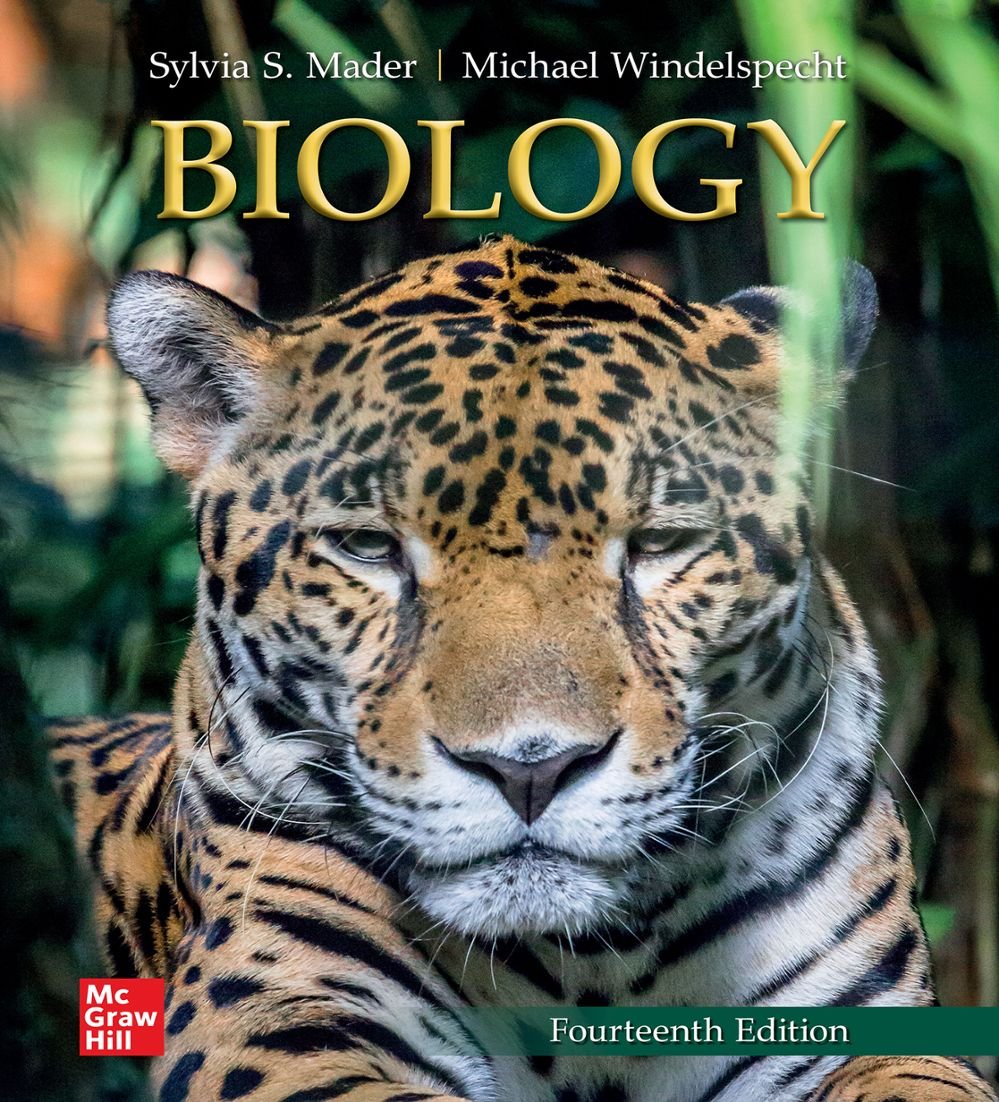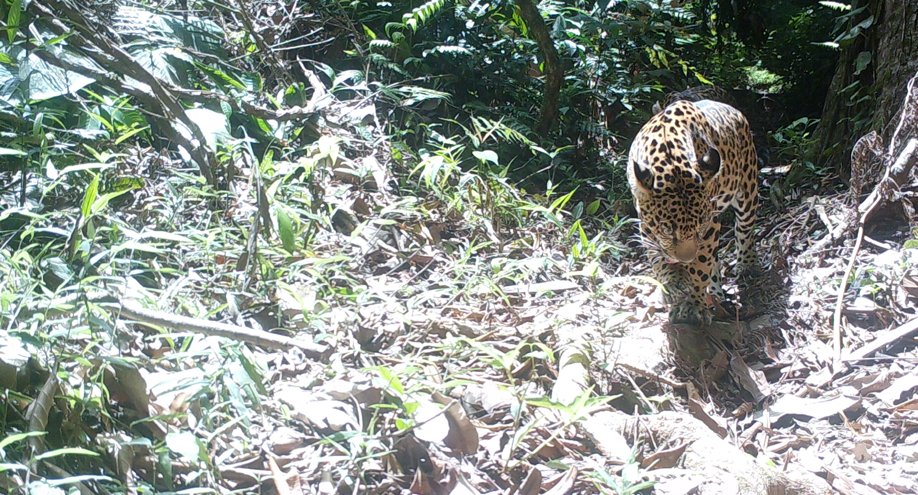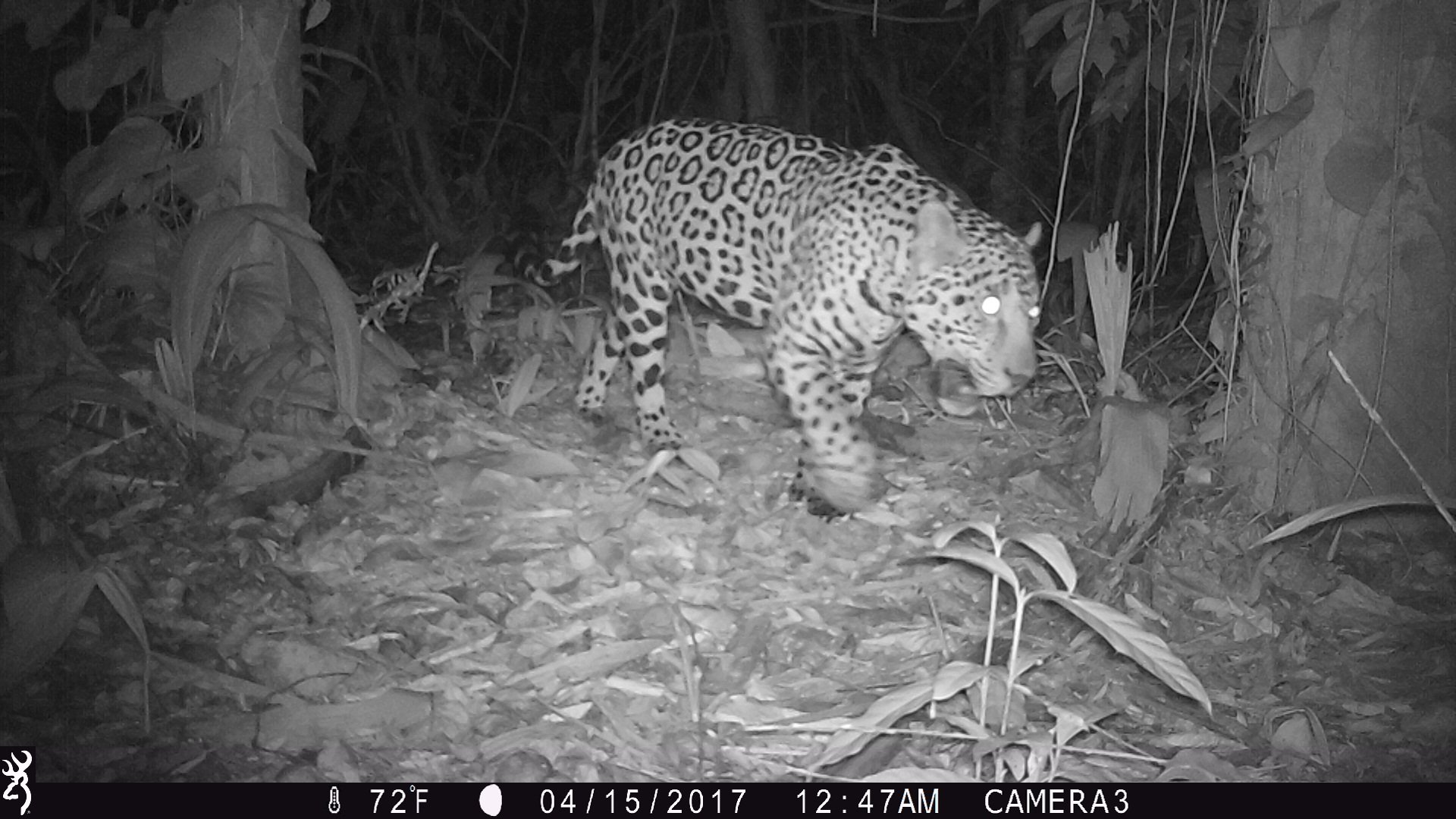Looking into the Eyes of a Jaguar
If you had asked me what I wanted to be when I grew up, I would have answered a big cat vet. I have always loved animals, and don’t get me wrong, over the years I’ve had some great dogs, a few fish, and even a couple of misplaced hamsters, but ever since my childhood I have been intrigued by cats. Perhaps it is because cats are unique. If you look into the eyes of a dog you see a trusted friend, but look into the eyes of a cat and you see a challenge staring back at you. Their stare makes you question your purpose on this planet and doubt whether our species is truly the dominant life form. I think that is why people generally avoid and mistrust cats, but since I do love a challenge, they have always been my preferred animal partner.
After some time in the Navy, and completing a degree in Zoology from Michigan State, I seriously considered roaming the world to work on the preservation and conservation of the truly big cats – lions, tigers, leopards – the species which to this day I consider to be some of the most amazing animals on the planet. However, as is often the case in life, my path deviated slightly. While at Michigan State I studied to be a vet, dreaming of the day when I could travel and help these majestic animals. For a while I worked with cats and dogs at a local clinic, and then horses on the campus of the university, but over time my interests strayed, this time towards the science of genetics.
A doctorate in genetics and a teaching career followed. Sometimes the dream would resurface when I looked into the eyes of one of our cats, but then life caught back up with me again. It would take me several decades before I realized that I hadn’t ever really abandoned the dream, instead, I had just taken a detour, and that the dream was still alive, waiting for me to remake the connection. It was almost thirty years later, in the small country of Belize, that my dream and I met again.
Meeting the Jaguars of Belize
My first encounter with a jaguar came when I visited the Belize Zoo in 2013. I was in Belize on one of my first trips with David Cox, a professor of biology at Lincoln Land Community College, a friend, and coauthor on several of my books. Dave was conducting a week-long biology class with his students, and he had invited me to tag along on the trip. Each day was an adventure, and a potential future article, but the true highlight for me was the last day when we made our stop at the Belize Zoo on the way out of the country.
But before I get to what happened that day, it is important that you understand that the Belize Zoo is anything but a zoo. It is the epicenter of the passion the Belizians have in preserving the natural wonders of their country. Founded almost 40 years ago by Sharon Matola, a woman whose dedication to conservation and education was an inspiration to all who met her, it has grown to become one of the primary centers of jaguar rehabilitation, conservation, and most importantly, education, in Central America. And as far as I am concerned, the world.
My first encounter with a jaguar happened late in the day on my first trip to the Zoo. I had already worked my way through the spider monkey and tapir habitats (don’t ever call these exhibits, they are probably the most natural habitats I’ve ever seen for an animal). I had spent some time looking at pumas, ocelots, and the strange jaguarundis, but I was looking for jaguars.
There, on a tree branch, barely 20 yards away, was one of the most magnificent animals I have ever seen. His name was Junior Buddy, and he was, and in my mind always will be, the flagship ambassador of the jaguar conservation project at the Zoo. Junior Buddy was completely uninterested in what was happening on my side of the fence, but as I approached he gently turned his head in my direction, and stared, unblinking, into my eyes.
Photo by Michael Windelspecht, Ricochet Science
Once you look into the eyes of a jaguar, you completely understand why the Mayans, and the modern day Belizians, have such a passion for these animals. They are truly the soul of the rainforest that makes up the core of this small Central American country. The depth of their look makes you instantly realize just how insignificant you, and every aspect of your existence, are to the world.
That glance penetrated my soul and reawakened my dream. For years, every time I made my way back to the Zoo, I rushed past the monkeys and tapirs to see if Junior Buddy was there. Over the years, I have experienced numerous jaguar encounters with Junior Buddy, brought students to witness the “jaguar ambassador” and talked about that day we met every chance I get. A look can change a life.
Unfortunately, Junior Buddy passed away in 2019. I had seen him earlier that year, but little did I know that this would be our last encounter. You never really know.
The Impact of that Moment
Over the past decade, I have made many trips to Belize with students and formed a company, called Inspire EdVentures, with two friends of mine, Dave Cox and Eric Weber, to bring students and others to this amazing little country. The capstone of each trip is the stop at the “Best Little Zoo in the World”, and a chance to see the jaguars of Belize. Eric Weber, is a truly gifted photographer. I take photos, Eric produces moments such as what you see on the cover of my latest Biology text:
Photo by Eric Weber, 5 Blue Media
However, as is often the case with inspirational moments, the story does not stop there. Because of our interactions with the jaguar projects at the Belize Zoo, Dave, Eric and I decided about five years ago to set up trail cameras in Belize to capture photos of some of the wildlife that had eluded us on our student tours. Through work with the amazing nature guides of Belize, we were able to record images such as this:
Photo by Inspire EdVentures
And this:
Photo by Inspire EdVentures
So why then is there a jaguar on the cover of my textbook? Some may say that it is just art, but in my mind, selecting Junior Buddy to be on the cover of my book was not just a way of saying thank you to an amazing animal, it was a recognition of a soul whose whole life contributed to a greater good. Thousands of people, like me, have been inspired by their interactions with Junior Buddy. He was a true ambassador for his species. And for me, most importantly, it is a constant reminder that there is much to be done.
I hope that one day, on a visit to the Belize Zoo, as I enter into the jaguar habitats, one of the next generation of jaguar ambassadors will look my way, pause, and give me one of those feline slow blinks in memory of Junior Buddy.
How Can You Help?
You may think that the rainforests of Belize, and their jaguar lords, are too far away for you to make a difference. I thought so at one time, but now I know that we can all make a difference in jaguar and rainforest conservation. Organizations such as the Belize Zoo, Panthera, and the World Wildlife Fund are dedicated to the preservation of this majestic species and the environment they dominate. Get involved, read about the people who have dedicated their lives to this cause, and then demand to anyone who will listen that we protect their legacy and habitat.
In Memoria – The Loss of an Icon
While I was preparing this article, Sharon Matola passed away unexpectedly in Belize. My interactions with Sharon, although usually brief, were always inspirational. Her passion was conservation, and it was apparent in every interaction I was fortunate to have with her. While Sharon’s loss was a tremendous loss, not only for the staff of the Belize Zoo, but for the wildlife of her adopted country, her legacy of dedicating her life to the conservation of wildlife lives on.
Before she passed, her staff and I talked numerous times on how we can assist the jaguar conservation efforts. At Inspire EdVentures, we have built virtual tours to support the Zoo during the pandemic. The highlight of these, especially for me, is always a chance to see her jaguar friends. There is so much more to do, so in her memory, I will be making an annual contribution from the proceeds of this book to the Zoo to support her legacy.
For more information:
The Flight of the Scarlet Macaw: An amazing story of Sharons’s efforts to conserve the wildlife of Belize.
Farewell to Junior Buddy – The Belize Zoo.
Virtual Tours of the Belize Zoo. Our efforts at Inspire EdVentures to bring the wonders of the Zoo to everyone, and assist the staff of the Zoo in their conservation efforts.




